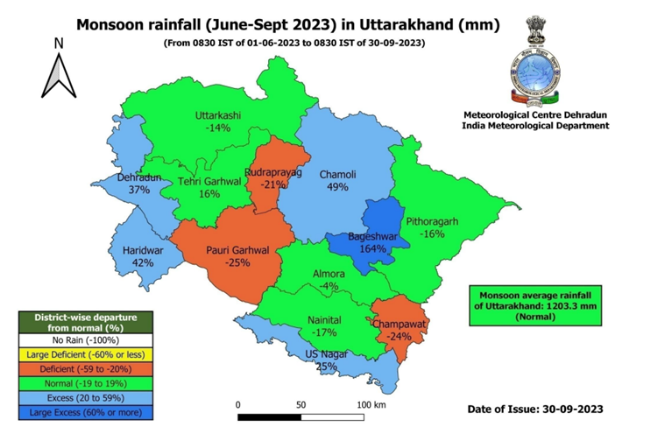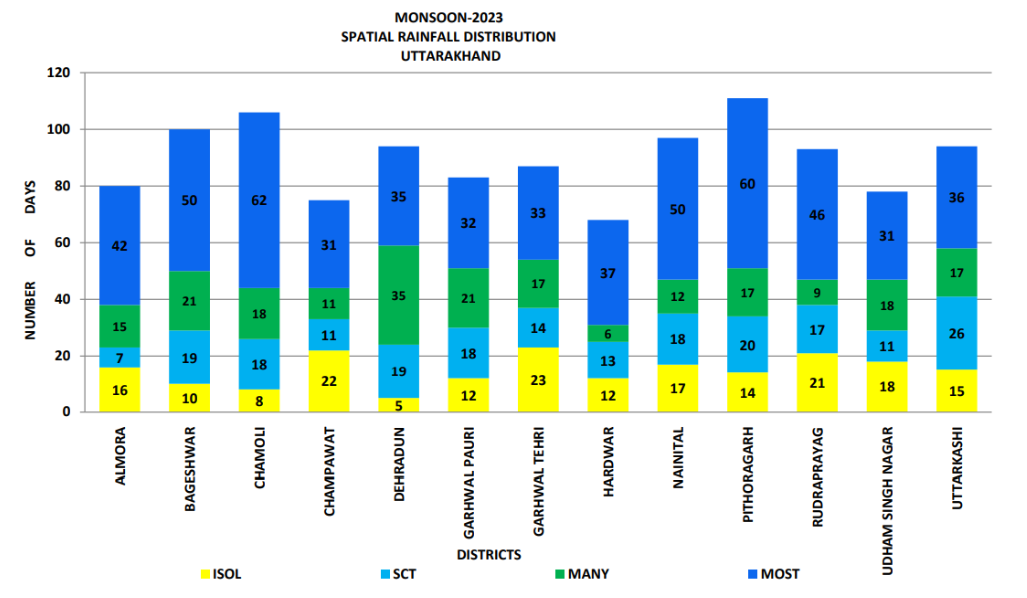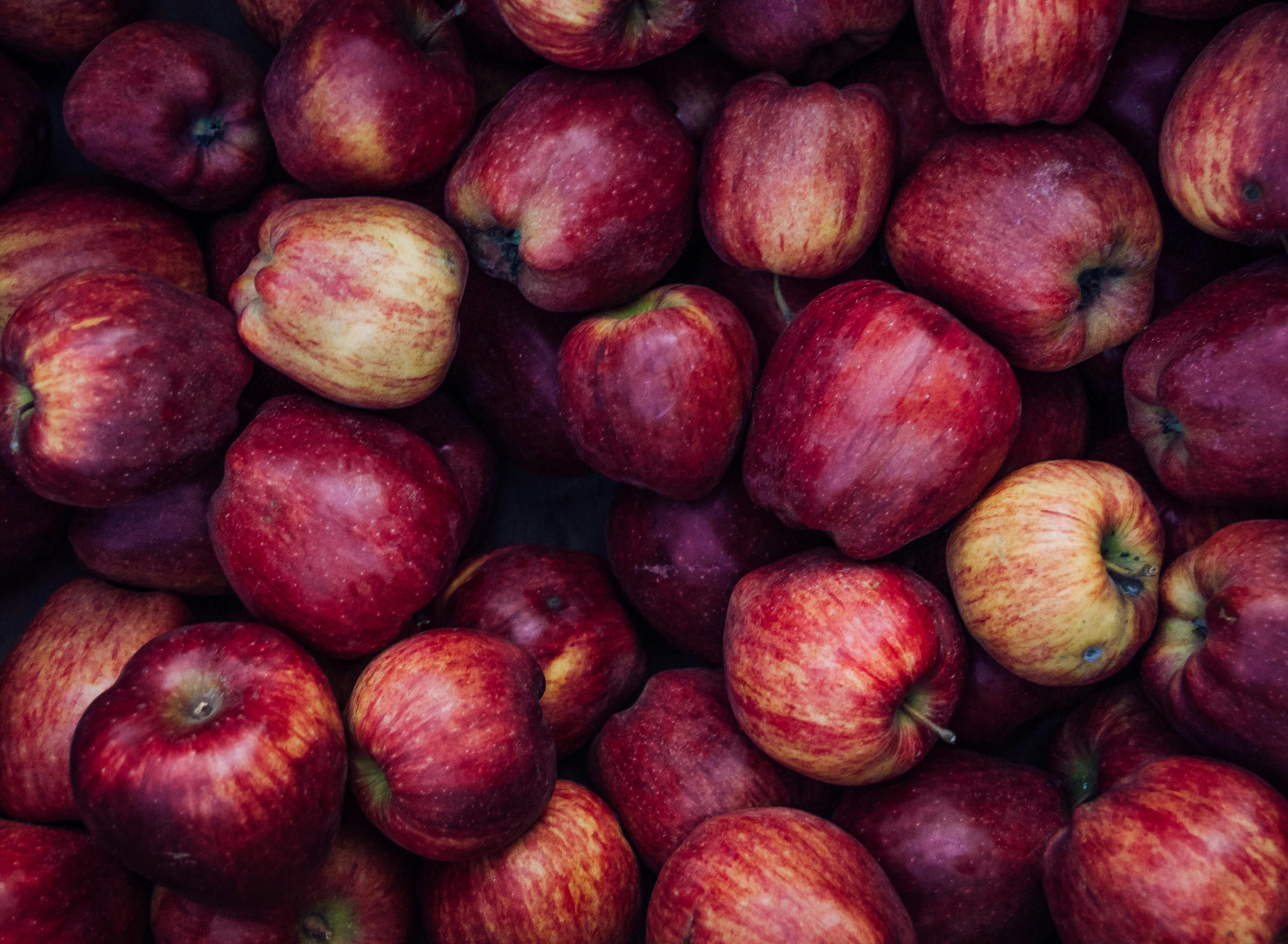This year, Uttarakhand’s normal monsoon was not so normal
The state might have managed to fall into the ‘normal’ rainfall category, but a closer look at the weekly rainfall depicts a different picture.
By Editorial Desk / Nov 3, 2023

Image Courtesy: The Statesman
The Monsoon season for 2023 ended with normal rainfall to the tune of 103% of long period average. Uttarakhand recorded 1203.3 mm against the normal rainfall of 1162.7 mm.
Out of 13 districts of Uttarakhand, five districts received normal rainfall that constituted for 39% of the area of the state, followed by four districts that recorded excess and one district recorded large excess rains equivalent to 38% of the area, and three districts received deficient seasonal rainfall which amounted for 23% of the area.

Extreme weather events continue to dominate the Monsoon season
The state might have managed to fall into the ‘normal’ rainfall category, but a closer look at the weekly rainfall depicts a different picture. The rainfall statistics indicate that the majority of the rainfall was contributed by the heavy rainfall (50 mm-100 mm) to extremely heavy rainfall (> 100 mm) events.
Monsoon arrived in the state on June 24, 2023, with a bang, with nine out of 13 districts witnessing heavy to extremely heavy rainfall. As a result, June ended with normal average rainfall though on the negative side.

July was a complete washout, with almost all districts witnessing torrential rainfall. Similar, scenario continued in August as well. This was due to prolonged spell of break-Monsoon conditions prevailing in the country during the core Monsoon months.
India recorded the third longest beak-Monsoon period this season on account of evolving El Nino in the Pacific Ocean. During the break-Monsoon spell, the axis of Monsoon trough that governs the rain over the core Monsoon zone shifts closer to the Himalayas, limiting heavy rains over the hilly states and foothills, while suppressing the rainfall across the remaining parts of the country.
September began on a rainy note, but rains took a back seat as Monsoon prepared to retreat by the end of the month.

India recorded 544 events of floods of heavy rains during the four-month long span, out of which Uttarakhand observed 68 extreme weather events, third highest in the country.

The above graph shows the maximum of rainfall days during the season across the 13 districts of Uttarakhand. The maximum number of rainfall days was over Pithoragarh district (111 days) and minimum number of rainfall days was over Haridwar district (68 days). Widespread to fairly widespread rainfall occurred on 80 days (maximum) over Chamoli and 42 days (minimum) over Champawat district.
Influence of climate change on the temperatures
Extreme weather events vary from torrential rains to soaring mercury. As soon as rains took a back seat, temperatures started soaring across the state. In an analysis done by Climate Central, people in parts of Uttarakhand experienced days with heat in August 2023 that was at least 5 times more likely due to human-caused climate change.
Over the summer, temperatures in Uttarakhand were, on average, 0.25 degrees Celsius above the 1991- 2020 mean. While daily temperature anomalies were relatively moderate throughout the summer, a significant portion of the state experienced temperatures 2-3 degrees above average for four periods: July 20-21, August 1, August 19, and August 21.
The Climate Shift Index (CSI) quantifies how climate change influenced daily temperatures. Between June 1 - August 31, 2023, Uttarakhand experienced 25 days with a CSI greater than or equal to 3. A day with CSI 3 indicates a very strong climate change influence — climate change made the temperatures in those areas at least three times more likely. There were two spans of days that stood out this summer for their elevated and sustained CSI.
- First, from August 7-12, the daily CSI in and around the state largely remained greater than 3. On August 11 and 12, the CSI in most of Uttarakhand as well as throughout the entire Eastern half of India was 5, indicating that temperatures in those regions had been made at least 5 times more likely.
- Second, from August 16-21, the sustained CSI levels were remarkable: over the course of the six days, the CSI over most of the state remained at 4 or 5, indicating an exceptional climate change event. During these days, similar CSI values were apparent across Northeast India and South India, while a patch of negative CSI (indicating cool conditions that are less likely in today’s climate) was apparent in central India from August 18-21.


